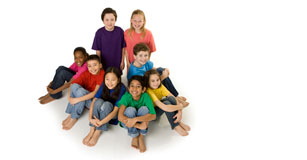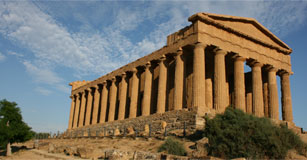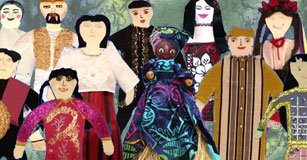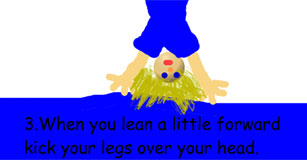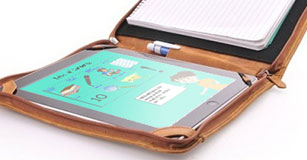50 Activities for 4th Grade
Hands-on ideas to engage fourth grade students in meeting standards and learning goals through digital projects.

Fifty ideas for using a digital approach to help fourth-grade students meet standards and learning goals.
1. Set learning goals
The simple act of writing down your goals makes you more likely to achieve them, so have students take some time to set personal goals to accomplish this school or calendar year. Developing goals that are SMART (specific, measurable, attainable, relevant, and timely) can help even more.
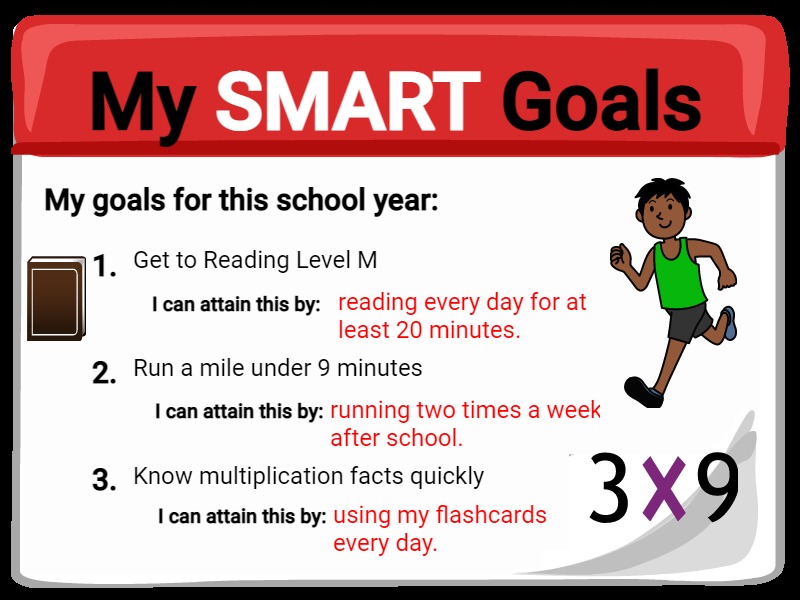
Have students use the goals as a home screen on their devices so they see a daily reminder of what they are working to achieve.
Explore a SMART Goals lesson plan
2. Draw with symmetry
Challenge students to draw using symmetry options in a paint program like Wixie.
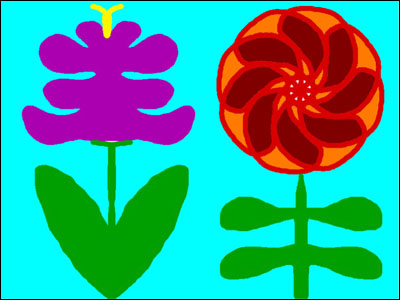
For example, ask them to create a spring scene with different flowers or a butterfly. Students can use both mirror and radial symmetry options.
Explore a Line Symmetry lesson plan
3. Visualize idioms
Ask students to illustrate and translate the meaning of an idiom to apply their learning and help others learn the meaning of this form of figurative language.
Explore an Idiomatically Speaking lesson plan
4. Create a historical survival guide
Combine research, empathy, and how-to writing by asking students to create a how-to or survival manual for a time in history you are studying. What tools are essential? What strategies should you employ? Where should you go? How will you get there?
5. Tell tall tales
Legends and tall tales are stories filled with unbelievable events or exaggerations that explain a person's character or how something came to be. Ask students to write, illustrate, and record their own tall tale about a historical figure or location.

Explore a Legends and Tall Tales lesson plan
6. Create a community field guide
Ask students to go outside, or even look out a window, and simply observe the plants and animals there. Have them find a plant they find beautiful or an animal that interests them. Use a digital paint program to have them sketch their object and add text labels and insights about what they notice.
Students can then use their observations and sketches, along with a field guide, to help them identify the species if they don't know what it is. They can add additional information or notes to create a field guide for other species that live nearby.
Explore a Fantastic Field Guides lesson plan
7. Craft a concrete poem
Concrete poems are poems where the words are arranged in a shape that reflects the topic of the poem. Because creativity, presentation, and productivity tools let you resize, move, and rotate text easily, they make it easy to move text to create a desired shape.
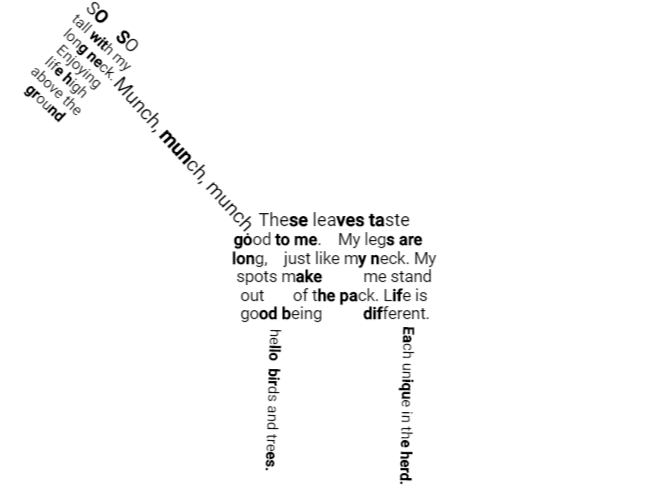
Ask students to write a poem in small phrases or stanzas. Then, use the font, size, color and rotation options to use it to create a larger image.
8. Design a vision Board
Have students create a vision board to represent what it will look and feel like when they reach their goals. A vision board is a collage of images, words, and short phrases that provide a tangible idea of what your future success looks and feels like.
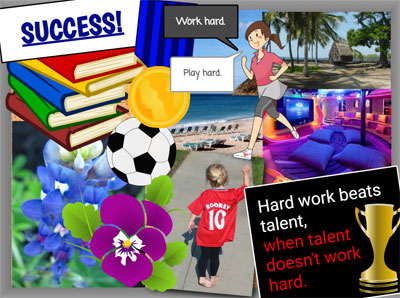
The visuals representing the goals serve as a reminder of what the future can be, so have students print or post the vision boards where they will see them regularly.
Explore a Vision Board lesson plan
9. Create an ABC's of...
After researching and learning about a topic, have students use an A-B-C format to share knowledge they have learned.
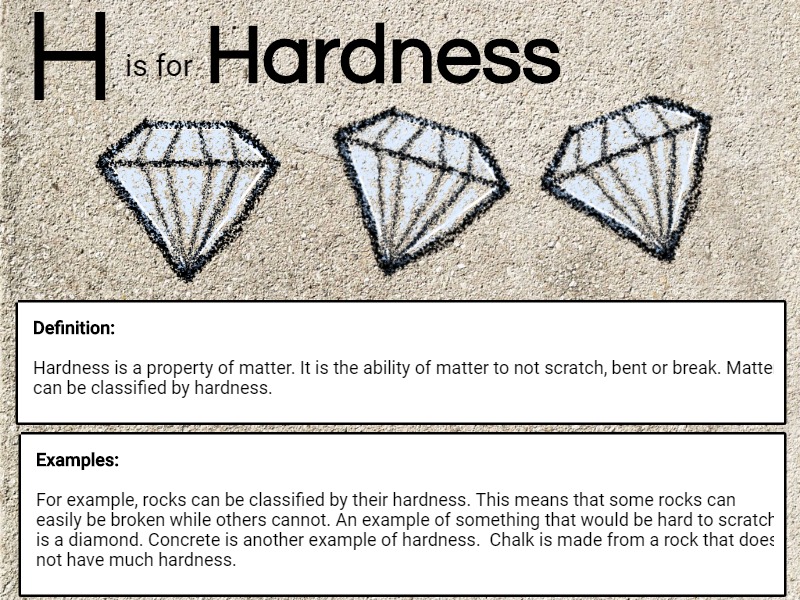
Assign individual letters to students and combine into a class project.
Explore an ABC Book lesson plan
10. Create a future digital footprint
Have students showcase the digital footprint they want to have in the future.
Let students get creative thinking about a future career or experiences and then share those through examples of social media posts and headlines they would like others to see when they search for their name in the future.
11. Make a mind map
Mind mapping is a powerful way for students to visualize connections between ideas, organize information, and brainstorm effectively. Creating a mind map helps students visualize and clarify:
- what is happening in each stage of a scientific cycle,
- how the traits and actions of characters in a story compare,
- the sequence of important events in a historical event,
- the hierarchy and connections of information they are learning.
Explore how to use the Mind Map tools in Wixie
12. Create and send a digital postcard
After learning something new, have students tell someone else using a postcard! Students could write a postcard from:
- a character in a story
- a biome or habitat
- a specific time in history
- a unique geographic or cultural destination
Working with a digital tool, like Wixie, makes it easy to combine text, images, and audio to create the postcard, as well as copy/paste the project URL to share it.
Explore a Postcards from the Past lesson plan
13. Design a how-to book or presentation
What can your students teach others? Procedural writing is an excellent way for students to become experts in a topic and feel confident about their ability to share the information with others.
Begin with a sequence or flowchart to help students break down the process into each essential step.
Then, ask students to transform the flowchart into an instructional booklet or video.
Explore a Procedural Writing lesson plan
14. Write a letter to or between characters in a story
Taking the perspective of a character in a story can help students understand their motivations and better comprehend their response to events in a story. Have students use stationery to write a letter to or between characters in a story.
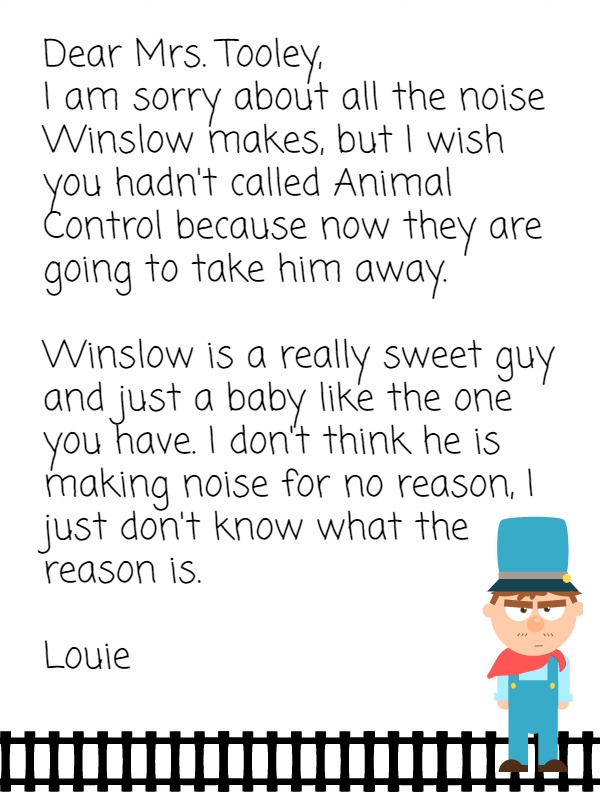
Give students a prompt that requires them to use evidence from text to justify their opinion or make an argument about it.
15. Give students project choices
When every student completes the same task, like creating a trading card or comic, project work is easier to manage. While this is effective, students also thrive with choice!

Create a choice board or task your students with sharing their learning in the medium they choose.
16. Create visual versions of poetry
Visual versions of poems are great performance tasks that require close reading. Have students use a digital publishing tool to type a poem from their favorite poet or one they may have written and add illustrations and voice recordings to help the reader and viewer better understand and connect with the poem.
Explore a Visual Poetry lesson plan
17. Inform with infographics
Infographics are visual representations of information that make complex ideas and large amounts of data easy to understand.
Instruct students to research information or collect data on a science topic. Then, have students create charts and graphs, analyze the information, and create an infographic to display the findings.
Explore a Creating Infographics lesson plan
18. Design a new book cover
Ask your students to create new covers for the stories they are reading. To design an effective book cover, students need to think about how they can use imagery to share knowledge of characters, setting and events in order to attract new readers.
Go even further, by asking them to design a complete book jacket — including a cover image, a plot summary, a book review, information about the author, and quotes or teasers from the story.
Explore the Design a Book Cover lesson plan
19. Celebrate everyday heroes
Popularity and fame make someone an idol, but these traits don't make them a hero. Challenge your students to help you compare what makes an idol and what makes a hero.
Task students with finding a local hero and raising awareness about their work in your community and what actions and characteristics make them a hero.
Explore a Commemorative Ceremony lesson plan
20. Design an Arcimboldo-inspired self-portrait
Giuseppe Arcimboldo is an Italian Renaissance painter known for his portraits of people that use objects like fruit and books. Challenge students to create Arcimboldo-style self-portraits by combining clip art images in an imaging tool.
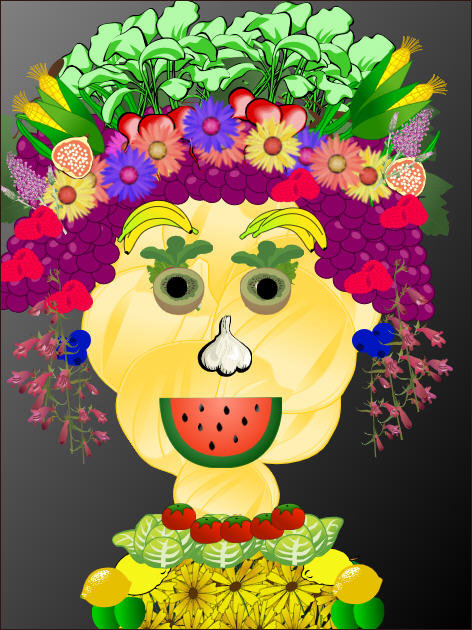
Explore an Arcimboldo-Inspired Self-Portraits lesson plan
You can also tie this project to writing by asking students to describe themselves, or a friend, using similes. Then, use the objects in these similes to create the self-portrait.

21. Create a character scrapbook
Ask students to demonstrate knowledge about a character's physical traits, feelings, experiences, and actions by creating a digital scrapbook. Students can include images of important events, diary entries, objects important to the character, letters from friends, and more.
Explore a Character Scrapbook lesson plan
22. Publish a historical newsletter
Have students create a newspaper or magazine to show what they have learned about the events, politics, and culture of a different time in history. (template)
Explore a Day in the Life lesson plan
23. Raise awareness with a public service announcement
Students in fourth grade are starting to have the capabilities and passions to change the world. Have students create a public service announcement to raise awareness, inform others, and change behaviors.
When developing a public service announcement (PSA), students have a chance to practice and apply persuasive writing skills in a real-world, authentic context. A short PSA targeted at a particular audience also encourages students to focus on writing organization, as well as voice and word choice.
Explore a Conservation PSA lesson plan
24. Send a thank you card
Practicing gratitude can have a big effect on our happiness. Empower students to show their gratitude by writing a thoughtful letter to someone for a gift they appreciate. Remind them gifts can be objects like clothing (material), but also things like friendship and support (immaterial).
Students can always print the message, but if they share digitally, they can record their voice and/or create a video, making it even more personal and special.
25. Create a book bento
Have students create a book bento to retell important details about a text or to visually celebrate their favorite title. Find a bento box background, like this one in Wixie, then have students arrange images about the book and add hyperlinks for an interactive collage.
26. Craft an if/but comparative
Comparing and contrasting is a powerful learning strategy. Crafting an If/But comparative report promotes analytical and creative thinking.
Have students craft an If/But comparative report to showcase how two topics they are studying, such as animals, book characters, or geographic regions, are similar and different.
27. Conduct an interview with a figure or object from history
Research a historical event and ask students to share their newfound knowledge and opinions by creating a fictitious interview with a person (or object) who was there.
Explore an Artifact Interviews lesson plan
28. Publish a personification story
Have students personify an object, and then write, illustrate, and publish a story about it.
Explore a Personification Stories lesson plan
29. Plan an event
Planning the details for a party, including needed space (geometry) and a budget (decimals), requires students to practice and apply math and argument skills to a real-life scenario.
Explore a Plan an Event lesson plan
30. Write a blackout poem
To write a blackout poem, you cover up words on a page of text until the leftover words form a poem. Using a digital approach means you don't have to pay for or destroy printed books.
Use a paint program to add a section of text from a favorite poem or book you are reading. Then, use the paint brush tool to blackout words, until a new poem appears.
Read the text and circle words you find interesting, then read them in order to listen to your poem. Circle additional words to fill out the idea and blackout (or pink-out, as the case may be) the rest of the words and add additional painted decoration.
31. Take a brain break
When the mind needs a break, a creative activity can help. Use a digital art tool to sketch or simply play a digital game.
Remember scratch art? Wixie has a collection of pages with a variety of backgrounds students can "scratch" using an eraser tool.
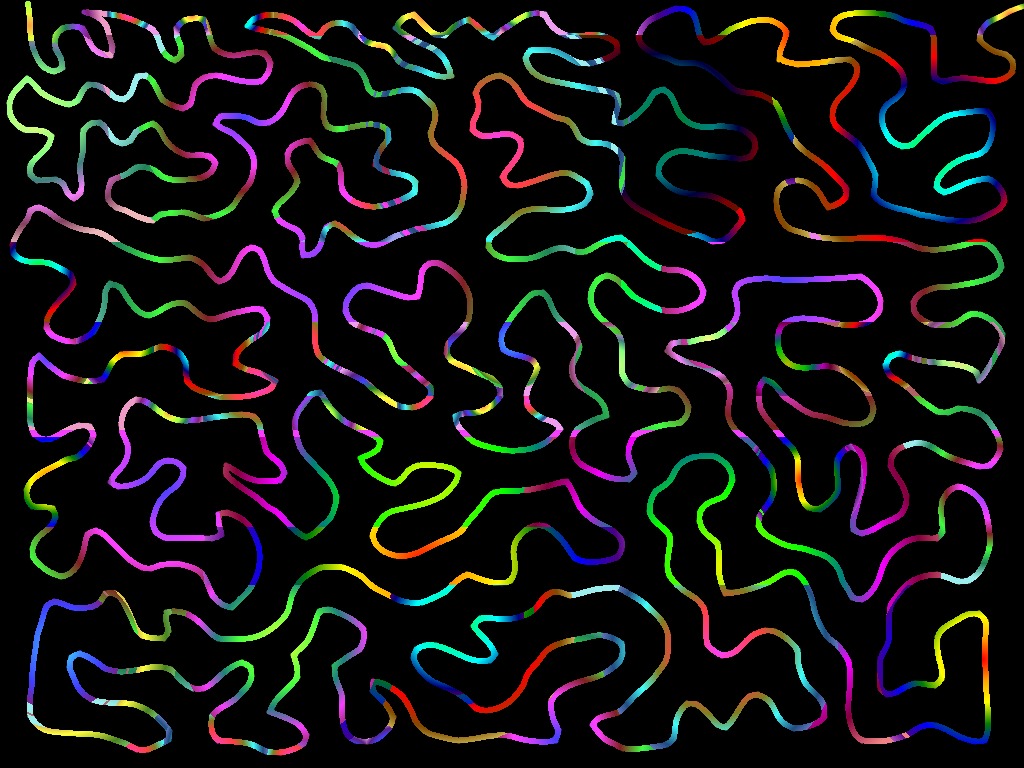
32. Create a character coat of arms
Small, but mindful, changes can move a task beyond remember and retell. For example, replace a typical character trait cluster assignment with the task of developing a coat of arms for a story's protagonist that represents traits of the main character.
Creating a coat of arms provides students with an opportunity to think about objects, colors, symbols, and mottos that reflect a character's personality, passions, strengths, and experiences.
Wixie has a Coat of Arms template that makes it easy to add color, text, and images to show comprehension.
33. Paint pop art
Share examples of Andy Warhol's work and then discuss the idea that mass-produced products from everyday life can be inspiration for art and the object of art itself. What objects do they find or use today that have their own beauty?
Many art and social media tools have filters or color options. Ask students to use clip art of common objects, like the Wixie example below, or capture a photo with their phone.
Students can then duplicate the image and apply filters and color options as they create Warhol-esque repeating images.
34. Write a haiku
Combine close reading and descriptive writing with visual haiku. Haiku poems are a 17-syllable verse form consisting of three metrical units of 5, 7, and 5 syllables. Haiku always contain a kigo (season word) to indicate the time of year.
Have students start with a photo as inspiration or write first and add visuals to enhance the meaning.

This spare form of writing forces students to choose words wisely. Share haiku and have students read closely to find the kigo word as well as identify other highly descriptive words.
Explore a Harmonious Haiku lesson plan
35. Conduct a charity challenge
It seems like so many people around the world are working tirelessly to keep everyone safe, healthy, and fed. Research the charities in your community, then ask students which charity deserves a 1 million dollar donation?
Have each student present their charity choice to the class and argue why the charity deserves the money.

Push students further by transforming their opinions into formal letters or emails to philanthropic foundations on behalf of these charities.
36. Paint with pointillism
Pointillism is a style of painting developed by Georges Seurat and Paul Signac that uses small, individual dots of color to create the illusion of shapes and images.
Challenge students to create paintings with pointillism. Digital art tools make it easy to change the size and color of the paintbrush as well as magnify to help students change the size, spacing and color of small dots to make a larger image.
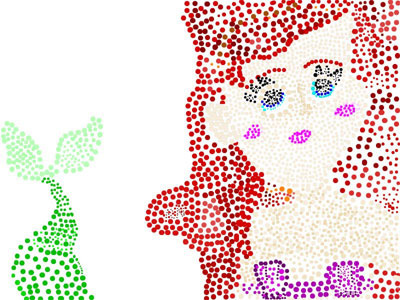
Explore a Paint with Pointillism lesson plan
37. Design a superhero
Tap into students' passion for comics and superheroes by asking them to share some favorites. Then, ask them what qualities or "powers" make a great superhero.
Use an ID card approach to help them define their hero's identity.
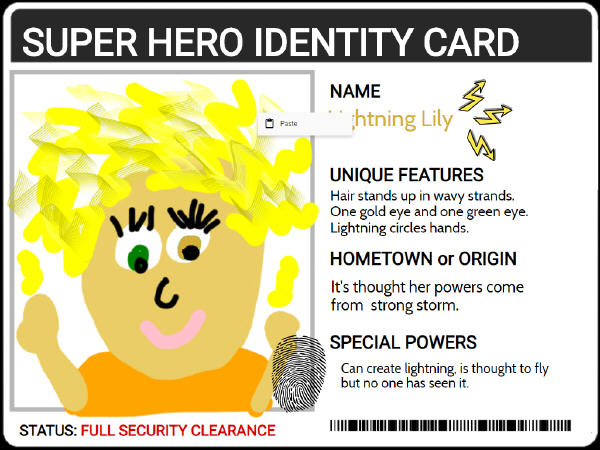
Discuss as a class, and then ask each student to design their own superhero and explain how their traits make them a hero.
Explore a Design a Superhero lesson plan
38. Promote a book with a movie-style trailer
Have students create book talks in the form of movie-style trailers to promote their favorite books and get other students excited about reading them.
Explore an Entice Your Reader lesson plan
39. Produce a fictional news broadcast
Watch a couple of news broadcast segments as a class and discuss how they effectively inform their audience about news, events, and other topics.
Have small teams work on a broadcast that includes segments like a main story, an expert interview, a human interest story, and the weather.
Explore a News Broadcast lesson plan
40. Write your own word problems
Have students use a paint or image program, like Wixie, to draw models that help the viewer (and themselves) visualize quantities and relationships in word problems.
41. Create comics, cartoons, and even graphic novels
Comics and cartoons are a great way to engage students in the stories they are reading and the information they are researching and exploring. Have students create comics for a fun way to practice narrative writing, retelling, sharing understanding, teaching others, raising awareness, and more.
Explore additional ideas and lesson plans for creating comics
42. Produce video biographies
Turn informational writing into a motivating experience by having students create a video biography of a historical figure.
Explore a Video Biographies lesson plan
43. Host a tourism trade show
Learning about a new region, state or country should be fun and steeped in a practical and real-life application. After viewing tourism promotional materials, task students to work in teams to research and pitch their area of interest in the form of a brochure, slideshow or social media post.
This makes for a fun way to get students to practice writing and speaking in a world language classroom.
Explore a Tourism Trade Show lesson plan
44. Share your support
We are growing more aware of the need for both mental health and social-emotional skills. Foster a positive classroom culture by creating unique cards that share a note of support or a compliment.
Tools like Wixie let you print multiple copies or pages onto a single sheet of paper, making it easy to print, fold, and share. Great for dropping in a classmate's lunch box or backpack.
45. Make a mandala
Mandalas have been around for thousands of years and are highly structured forms of art that use repetitive patterns.
While mandalas are a form of radial symmetry, they have also historically been a form of meditation and a way to get to know oneself more completely. Making a mandala can help students reflect on their lives and their world.
Go on a quiet walk and let students pick up things that capture their eye, like fallen leaves, sticks, and flower petals. You can also collect found objects and recycled materials and have students use these objects to create a tangible or physical mandala.

Using a digital tool, like Wixie, to create a mandala provides students with unlimited access to a range of shapes they can use repeatedly. This makes it easy to create mandalas that reflect one’s interests, passions, and aspirations.
Explore a Make a Mandala lesson plan
46. Survey peers
Capturing, analyzing, and communicating data is essential for success in our information age. Maximize opportunities for your students to create, give and display the results from surveys they create.
47. Design a school garden
Put students in charge of the design (and maintenance) of your school garden. Give them an empty pre-made bed or the location at your site where one can be constructed.
If you don't yet have one in place, ask students to consider the purpose of their design. For example, are they trying to:
- Showcase native plants.
- Grow their own food or herbs.
- Landscape while saving water.
- Attract butterflies.
Students organize the plants into the allotted space, craft a presentation of their garden design, as well as write care and maintenance instructions.
Explore a How Does Your Garden Grow lesson plan
48. Make a map of your room
Combine map making and measurement skills by asking students to design a map of their bedroom or other favorite room in their home. Use a grid background in a paint program so students can use the squares to show size accurately and editing is easy. Bonus if they include a scale!

After students understand how to map their own room, encourage them to design a dream bedroom!
Explore a How Does Your Garden Grow lesson plan
49. Tour the solar system
Plans are already in place for commercial tours into our planet's atmosphere, and the entire solar system is bound to be next.
Have students showcase knowledge of the solar system by creating a virtual tour or promotional materials that describe what one might see on a trip through space.
Explore a Visit Our Solar System lesson plan
50. Invent it
Many inventions, like Velcro®, mimic nature or apply scientific principles in new ways. After studying simple machines, ask students to take one or more simple machines and combine them as they invent a product that solves an everyday problem.
To help students deepen understanding about how an invention applies a scientific principle, have them pitch their product in an invention ad.







